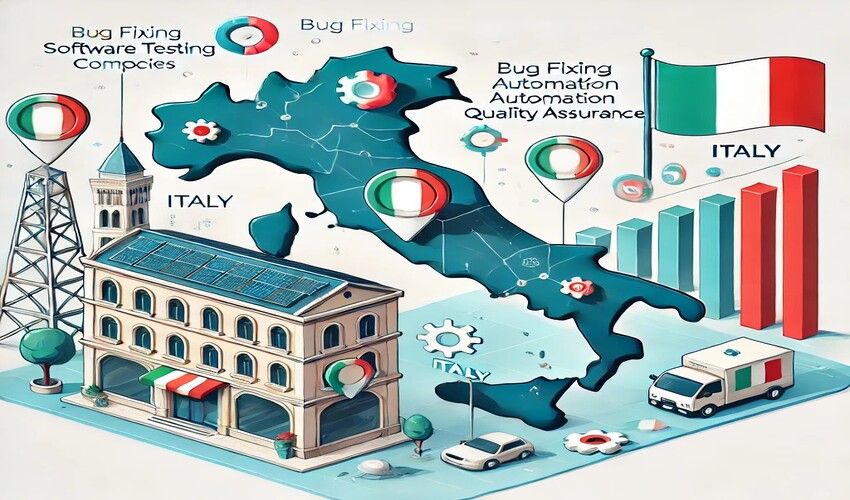Last updated on September 17th, 2024 at 05:40 am
When was the last time you referred to physical maps to find directions?
Been years, isn’t it? Humans can no longer function without mobile applications. We rely on mobile applications for even the tiniest decision-making processes.
We basically breathe them. But why do we rely on them so much?
It’s simply because we need rapid access to information or data in this fast-paced world.
It is also crucial to ensure your mobile app is entertaining enough to keep users on it if you have one. To capture a portion of the growing market, you must communicate with customers and give them a pleasurable experience. Make your application the solution to your audience’s needs.
Now, it is important that you realize that this will increase your reach and customer engagement, and putting this solution into practice will also benefit your company.
These include improved efficiency and productivity, increased client retention and loyalty, and the chance to get insightful data about user behavior.
So, if you’re considering venturing into mobile app development, or if you are a company for iOS development, look at our curated list of the 6 iOS app development platforms for 2023.
This article will examine the top frameworks for creating iOS apps in 2023. These predesigned code libraries, or frameworks, provide programmers with a base to build robust and scalable systems. They include data organization, networking capabilities, and user interface elements.
These frameworks enable developers to save time and effort by utilizing pre-existing code components. Efficiency is thus ensured, and the development process is accelerated.
Let’s begin!
Top 6 iOS App Development Platforms
1. Swift UI
One framework that is expected to make waves in 2024 is SwiftUI.
It is one of the most preferred iOS app development platforms. With the power of Swift, SwiftUI offers a simple method for building interfaces for all Apple platforms.
It is important to note that Apple introduced SwiftUI in 2019, and due to its rich functionality for developing user interfaces and syntax, it has grown in favor among iOS developers. The Apple ecosystem, which includes watchOS, macOS, iPadOS, and tvOS, changed as a result.
It’s Features:
With SwiftUI, programmers can create aesthetically pleasing user interfaces directly in code, facilitating experimentation and streamlining maintenance. This creative framework’s appeal is increased by the fact that it works with watchOS and macOS.
2. React Native
For a while now, React Native has been a hot topic in smartphone development.
A JavaScript framework for building mobile apps for iOS and Android devices is called React Native, or RN for short. This framework has the advantage of providing programmers with a codebase to build platform-specific applications.
Initially, React Native was developed by Facebook for iOS support. However, it now supports the Android operating system well, enabling developers to create mobile user interfaces for both platforms.
It’s Features:
Building with React Native offers efficiency. It can quickly become addictive. React Native utilizes Node.js, a runtime environment, for JavaScript code development.
3. Firebase
Firebase is a platform for creating iOS apps and provides tools for managing and creating apps in every way. Real-time database synchronization, user authentication, cloud-based data storage, serverless logic execution, and effective messaging are some of its services.
It’s Features:
iOS developers can leverage Firebase’s analytics crash reporting and ML Kit to enhance the user experience. Firebase facilitates the approach of creating scalable and fast iOS applications. Its intuitive APIs and comprehensive documentation make it the best framework for developers in 2024.
Firebase Hosting simplifies the deployment of web content. With documentation and a supportive community, Firebase remains a choice for iOS app developers who seek efficient development and innovative features in the ever-changing landscape of app creation.
4. Flutter
Flutter, by Google, has emerged as a contender in the world of iOS development. With its collection of UI components and its single codebase approach, Flutter empowers developers to create stunning applications.
It’s Features:
A standout feature of Flutter is its Hot Reload capability, which allows developers to make real-time code changes and quickly experiment and iterate.
As the popularity of Flutter grows, it becomes increasingly important for iOS developers to explore its potential for creating captivating applications.
Moreover, Flutter provides a range of tools and services for developers. It seamlessly integrates with cloud-based services. It offers functionalities for user authentication, data storage, and push notifications.
5. Xcode
Xcode is Apple’s integrated development environment (IDE) for all platforms. It is offered to all Apple customers for free. The most recent version of Xcode, Version 11, is available for free download from the Mac App Store for macOS Mojave.
It’s Features:
Its tools let developers create, produce, and distribute apps for Apple platforms such as iOS, iPadOS, tvOS, watchOS, and macOS.
Using Xcode brings advantages when it comes to developing software for Apple devices. Moreover, it is a tool for tasks like code signing and submitting applications to the store.
Furthermore, Xcode supports source code written in a variety of programming languages, including Swift, Objective C, Python, C, Objective C++, C++, Java, and others.
6. Appy pie
Appy Pie is an application development platform that allows users to create apps for operating systems such as iOS, Android, and Windows Mobile OS. Businesses, casinos, fitness centers, and religious organizations are among the industries served by the platform.
Appy Pie empowers individuals and small businesses who don’t have coding knowledge to create their mobile applications. Initially, people knew Appy Pie more for their Android app development capabilities. Now, they support iOS app creation too! So you can make apps for both platforms using their platform.
It’s Features:
Appy Pie provides a no-code or low-code approach, so you don’t need to know much about coding. Their drag-and-drop interface makes it simple for anyone, even non-technologists, to create iOS apps.
They have various built-in templates to pick from, and you may edit them to meet your demands, such as branding and design.
The best part is that they make it simple for you to publish your app on app stores like Apple’s App Store. They also give you tools for managing and updating your apps once they’re there in the world.
While we think Appy Pie is great if you’re a business or just an individual with an idea, for an app that you want to bring to life, it might not be the best choice if you’re looking for something complex or packed with features that require a lot of customization or advanced functionality.
7. Appcelerator (Axway)
Appcelerator is a vigorous cross-platform development tool that relies on JScript to design native applications for Apple’s iOS and Google’s Android. This also involves such tools as Titanium SDK app development platform where developers can build applications with a single code base. Mobile application development firms such as Appcelerator provide real-time analytics to give developers details on app usage and reception.
It’s Features:
Javascript app development for iOS applications.
Services for push notifications, APIs and for keeping the data cloud.
Native API to provide an enhanced performance along with the flexibility to make changes.
8. Ionic
Ionic is an open source SDK, which uses the web technologies like HTML, CSS and JavaScript to develop the iOS applications. This platform provides the hybrid application development model which implies that This built applications are actually web applications that are covered with the native program interface. They relies on Angular and is packed with UI components letting you create great-looking, adaptive iOS apps.
It’s Features:
Development for both iPhone and Android as well as web-apps.
UI component Ui theming has a rich library of components.
It now integrates with Cordova for native functionality.
9. Xamarin
Xamarin is now a. NET mobile application development platform owned by Microsoft Corporation. NET platform enables applications to be developed that run natively on iOS using C#. This will enable them to have the natural APIs and UI controls that will ensure that the apps are as good as true iOS apps. Innovatively Xamarin agrees in most of IOS, ANDROID as well as WINDOW with commonality of code that is very efficient with natural performance.
It’s Features:
A single enviroment provided by C# for both iOS and Android.
Native APIs and user interface elements access.
Support of Microsoft Visual Studio for integrated development environment.
10. PhoneGap (Apache Cordova)
PhoneGap that is based on the Apache Cordova framework enables developers create native apps of iOS by using HTML5, CSS3, and JavaScript. If you want your application to be cross-platform meaning you want to write a good amount of code which can work both on web browsers and iOS than this is your best bet.
It’s Features:
Uses web technologies in developing the application for iOS platform.
The ability to leverage plugin to use native device capability.
Sublime for both web and native app development but especially for the partially native hybrid apps.
To Sum up
As we explore the evolving landscape of iOS app development in 2023, it becomes clear that we have an array of resources and frameworks.
These platforms, such as Apple Xcode, Google Firebase, SwiftUI React Native, Flutter, and the user-friendly Appy Pie, offer possibilities for developers and businesses alike.
The choice of platform ultimately depends on project requirements, team expertise, and the drive for innovation. Whether you prefer development for precision platform frameworks for efficiency or no code/low code solutions for accessibility, the ultimate goal remains to create exceptional iOS applications that engage users and achieve success in a competitive digital landscape.
In 2023, these leading iOS app development platforms will continue presenting opportunities for creators and entrepreneurs. If you are an established company for iOS development or just an independent developer, keeping an eye on these top platforms will help you tremendously. We assure you the above-mentioned platforms are the future.

















Leave a Reply